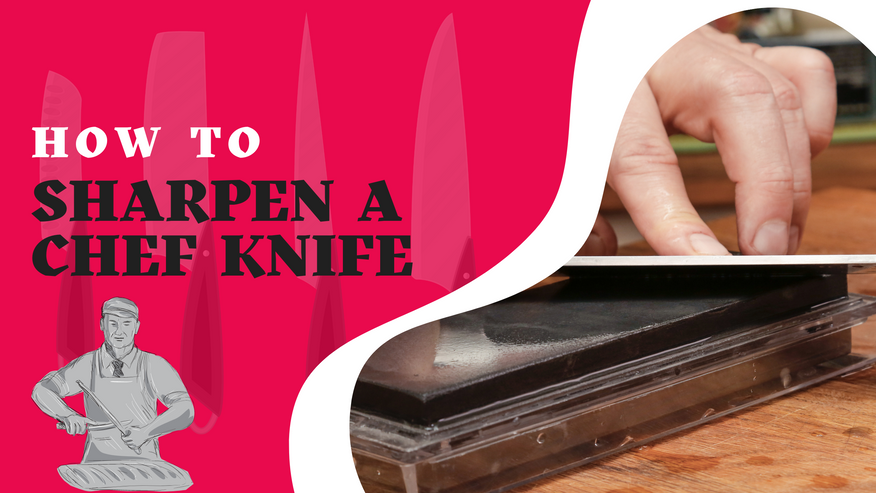Mar 10th 2023 - Team
How to Sharpen a Chef Knife Properly
A knife that isn't sharp is dangerous. You are much more likely to cut yourself by accident with a dull knife than with a sharp one. It takes more force and effort to cut through something with a dull knife. Contrarily, a sharp knife requires far less pressure to make a clean cut through whatever it is you're trying to cut.
How to Sharpen a Chef Knife
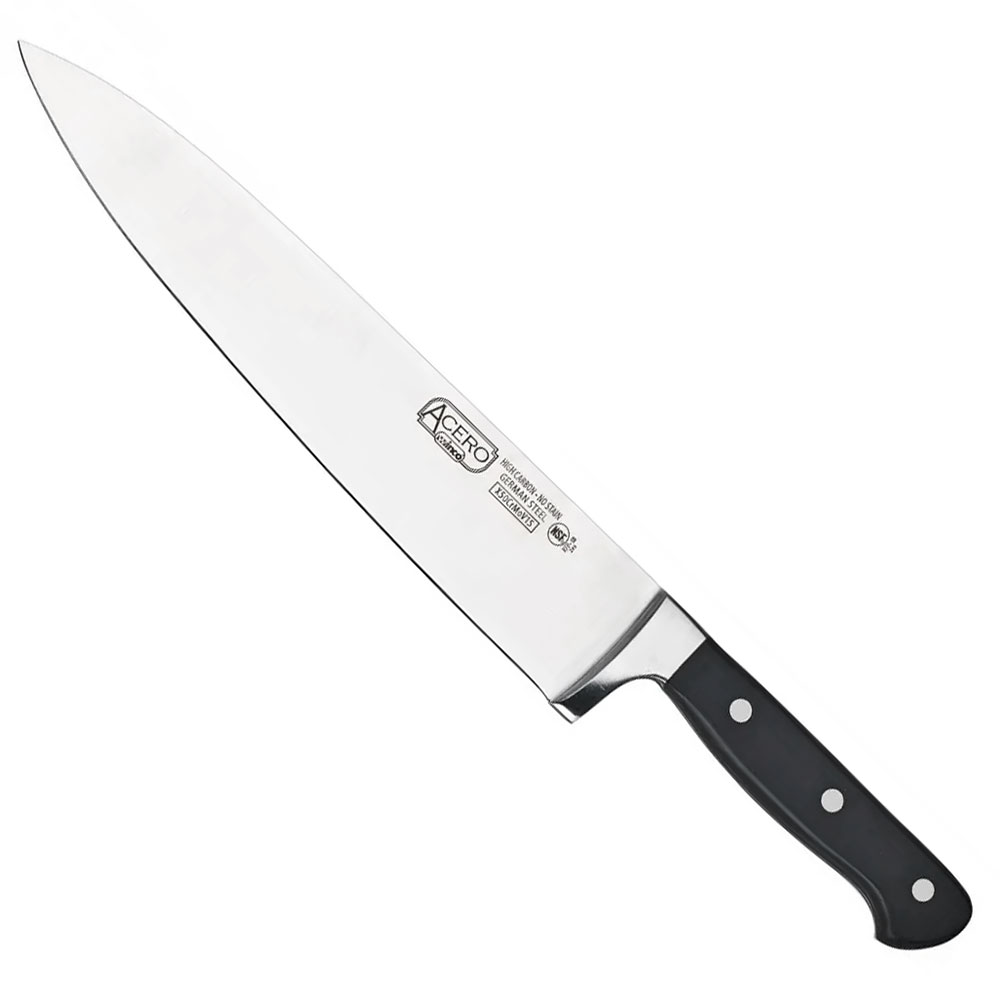
You can sharpen your Chef Knife Using these Methods, with different types of sharpeners:
- Using a Tabletop Sharpener
- Using an Electric Knife Sharpeners
- Using Whetstones
- Using a Knife Sharpening Steel
Winco KFP-100
Tabletop Sharpeners
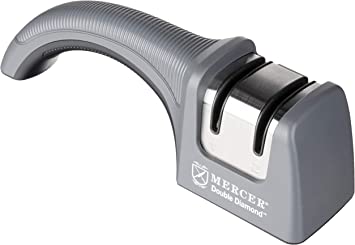
Portable tabletop sharpeners, often known as "V sharpeners" or "pull-through sharpeners," are the most convenient and widely used type of knife sharpener. These handy gadgets are small, flat, and designed to fit on a table or countertop; they have a handle on one side and two or three narrow slots on the other for inserting a knife blade. Inside the slots are two abrasive surfaces with contrasting grits (how large or small the abrasive pieces are). A fresh edge is created by positioning these two parts in a 'V' formation and pulling metal from the blade on either side. The granularity of the sharpener gradually increases from coarse to fine as you move along the slots. Pretty much like sandpaper.
This method is not as exact as using a whetstone, but it will get the job done if you need to sharpen a knife fast or don't have access to one. The biggest disadvantage of this simple method is that a desktop sharpener removes somewhat more material off the edge of the blade with each sharpening than more precise ways do. This can cause your knife to dull faster and wear out sooner. Since this method doesn't require sharpening as frequently, it may be preferable for those who don't regularly use their knives for extended periods of time.
Mercer M10200
Method 1: Sharpen a Knife with a Tabletop Sharpener
Step 1: Hone the Knife
Start by sharpening your knife on honing steel, then use a countertop sharpener. If you omit this step, the blade might not be properly aligned. Imagine cutting your bangs without first combing them through; you'd wind up with crooked bangs when you finally got around to combing them out if you did that.
Step 2: Place the knife where you want it and pull it through the sharpener
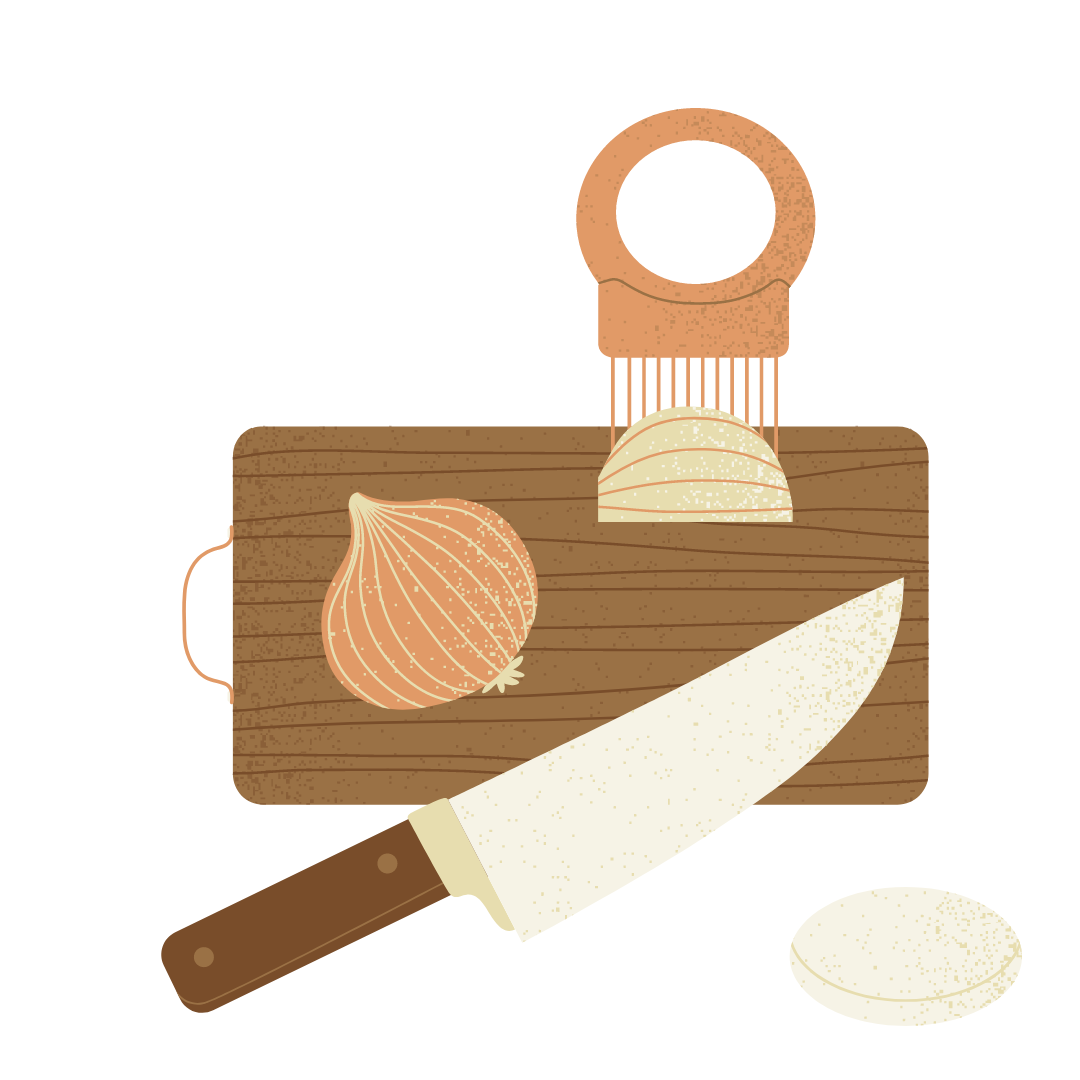
After sharpening your knife, place the sharpener on a flat surface and hold the handle with your non-dominant hand.
Hold the knife firmly in your dominant hand. Then, starting at the base of the blade, insert the knife into the slit and quickly draw it through the slit towards yourself, working from coarsest to finest grit. In order to have a nice, sharp edge all the way through, the blade must be inserted into the slit from tip to base.
Step 3: Repeat The Process
You should go through this process three to four times with the coarse grit and five to six times with the finer grit.
Step 4: Clean the Blade
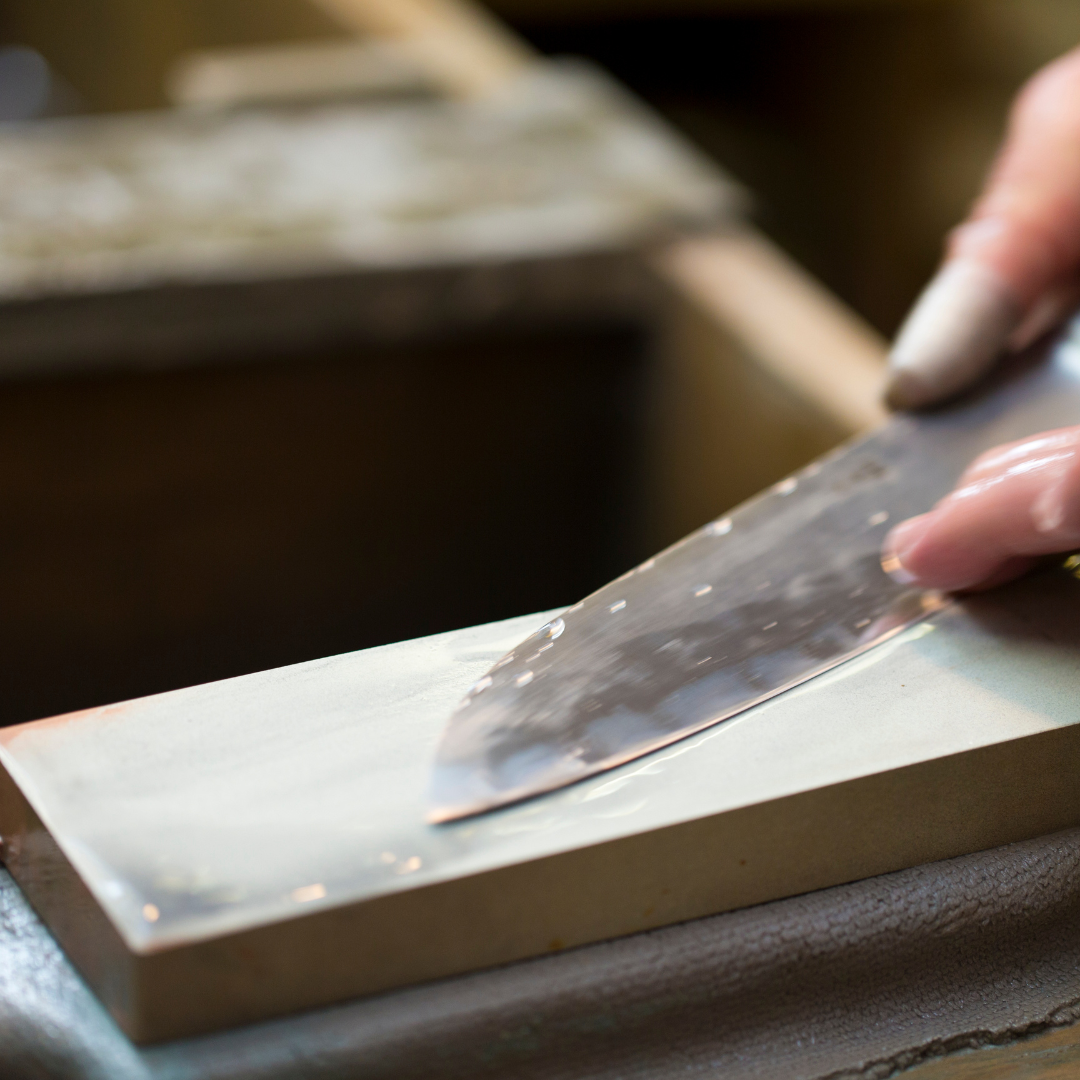
After you're through, clean your blade with a moist cloth. Let it dry completely. The metal shavings left on the towel after using a knife sharpener are quite natural.
Step 5: Hone It Again
Make one final pass on the blade to sharpen it, then you are ready.
Method 2: Sharpen a Knife with an Electric Knife Sharpener
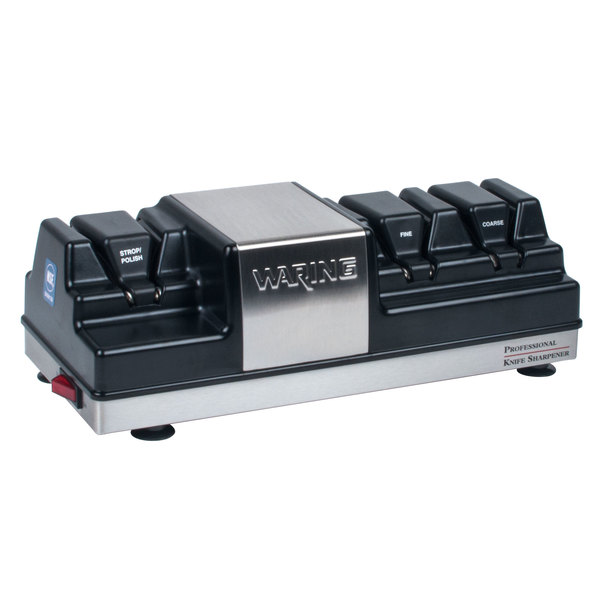
Operating these machines is straightforward. Electric sharpeners use motorized wheels with abrasives. These rotate against the blade. Make sure to adhere to the manufacturer's instructions.
- Step 1: You'll need to power on the sharpener while holding the knife securely but firmly. You won't even need to exert much force, as the machine will handle everything for you.
- Step 2: Gently and slowly draw the blade through the corresponding slots.
- Step 3: sharpen both sides of your knife by switching to a different side each time.
Waring WKS800
Advantages of Using an Electric Knife Sharpener
- The spring-loaded guides restrict the knife's motion, keeping the full cutting edge in contact with the abrasive at all times.
- If you start with the aggressive first slot, you can quickly take a Western knife with a 20-degree edge and bring it down to a 15-degree edge.
- The blades in the sharpener's numerous grinding slots are of varying coarseness, allowing you to customize the level of sharpening.
Disadvantages of Using an Electric Knife Sharpener
- The sharpener cannot be used on knives with a full bolster since doing so would distort the blade's form.
- Very costly, in comparison.
Method 3: Sharpen a Knife with Whetstone
Step 1: Put the Stone in its Place on the Surface
Get a rubbery shelf liner or some damp paper towels to put under the whetstone so it doesn't slide around. It's best to use a whetstone with the coarser side facing up.
Step 2: Sharpen the Leading Edge
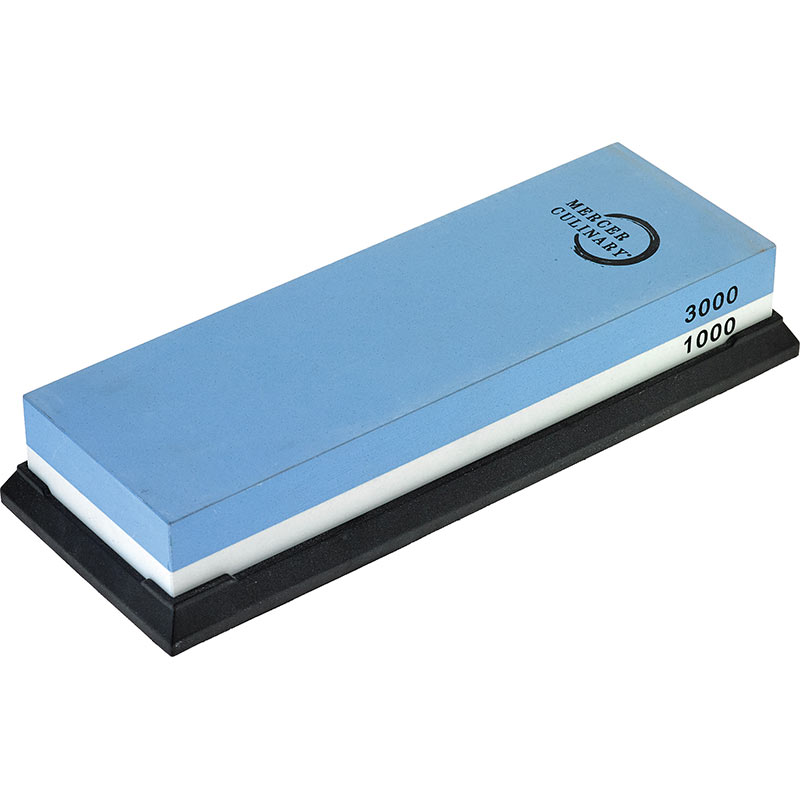
Turn the knife so that the handle is facing away from you. Place the end of the handle on the whetstone at the same angle as your blade.
- 15-degree angle for Asian-style knives
- 20-degree angle for Western-style knives
Keep your fingers flat and away from the blade's edge. Do this while you place your second hand in the center of the flat side. Holding the blade at a constant angle, draw it down the stone in a wide, circular motion. Do this until the end of the blade hits the opposite side. According to how dull your blade is, you may need to do this multiple times.
Mercer M15952
Step 3: Verify Sharpness
If you run your thumb perpendicular to the edge of the blade, you should feel a burr all the way from the handle to the tip if the first side is sharp enough.
As a precaution, avoid dragging your finger along the blade.
Step 4: Sharpen The Other Side
Flip the knife and sharpen it again in the opposite direction.
Step 5: Repeat.
Iterate the method on the fine side.
After one side of the knife is sufficiently sharp, switch to the fine side of the whetstone and repeat the process on the other side.
Where and When to Use a Knife Sharpening Steel
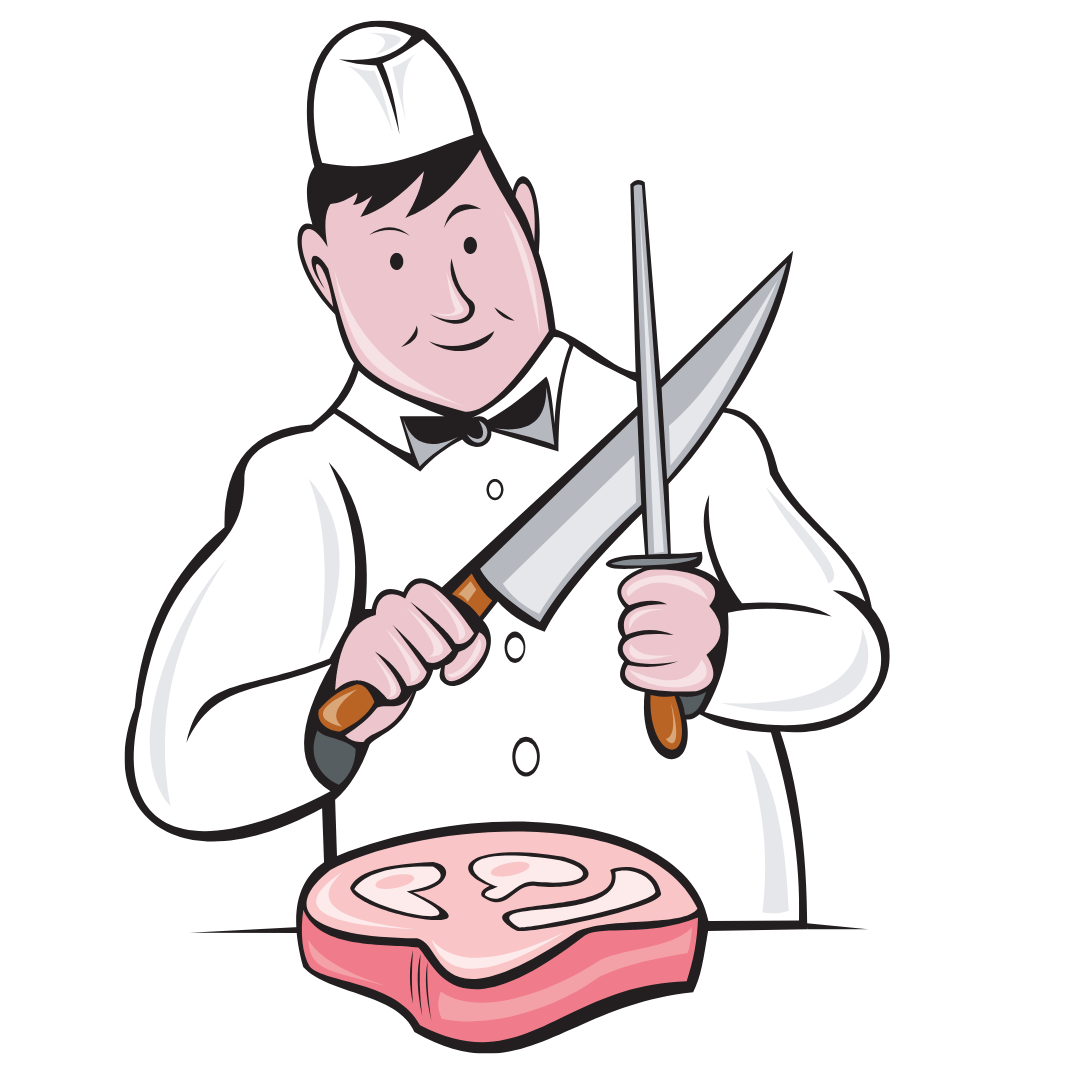
The metal rod labeled as a "sharpening steel" that comes with most knife sets actually just hones the edge of a slightly dulled blade and it is possible to straighten the blade by sweeping it along the metal. Keep a 15-degree angle between the blade and the steel throughout the motion.
Method 4: Sharpen a Knife with sharpening steel
Step 1
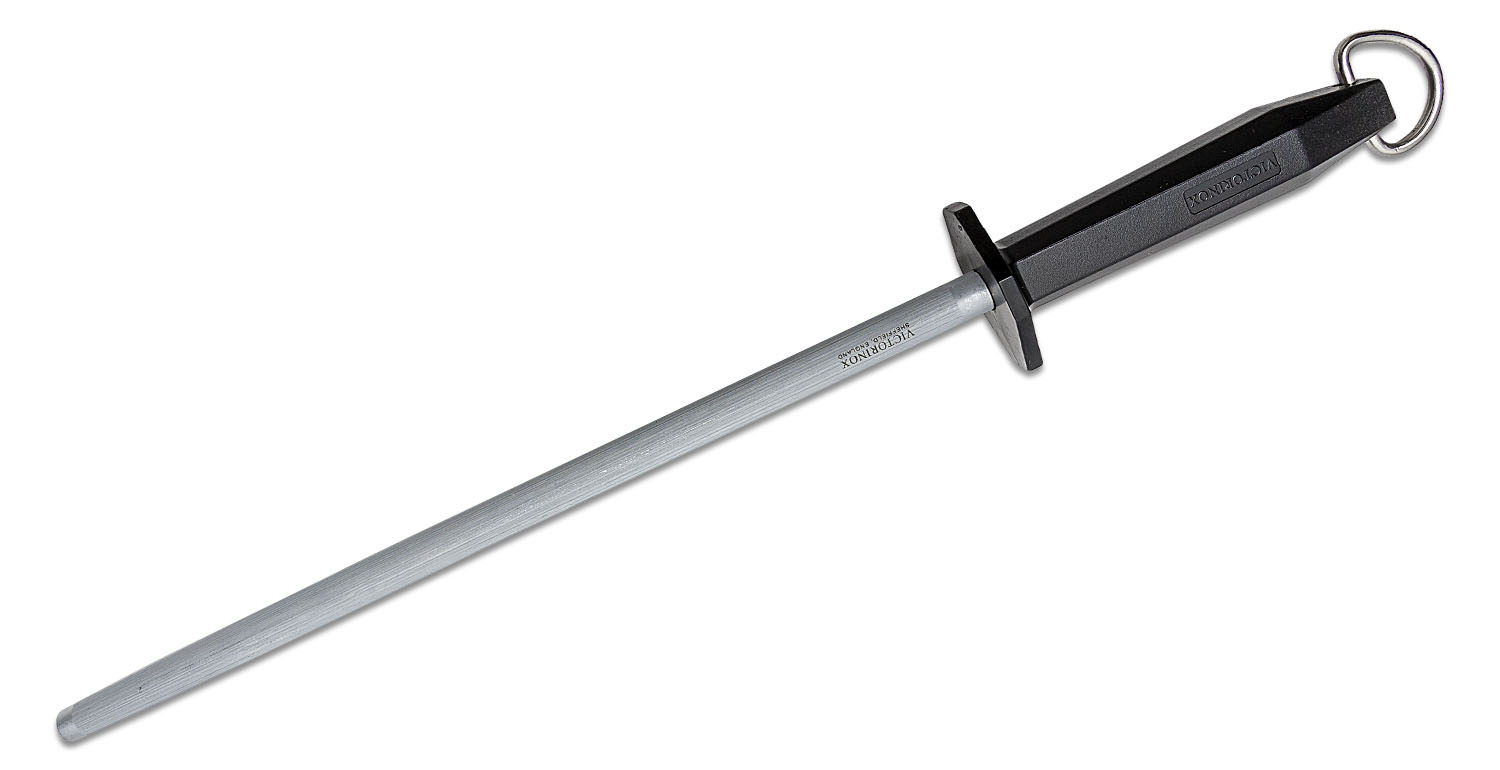
Holding steel in a vertical position with the point down ensures that it won't slip out of your hands. To sharpen a knife, you should rest the blade's heel against the steel's tip. Then point the knife's tip slightly upward. The knife should be held at a 15-degree angle from the steel.
Victorinox Swiss Army 7.8991.6
Step 2
Slide the blade along the length of the steel in a sweeping motion. Do this while maintaining light pressure and a 15-degree angle between the blade and the steel, and draw the knife toward your body so that the middle of the blade is in contact with the middle of the steel.
Step 3
To complete the action, run the blade's tip across the steel's base. Do the same thing on the opposite side of the knife. The edge can be realigned by making four or five strokes on each side of the blade. Do this for about eight to ten total alternating passes.
Checking the Sharpness of a Knife
Try the blade out on some paper.
Over time and with repeated usage, even the sharpest knives will lose their edge. Test your knife on a piece of paper to see if it needs to be sharpened. Grasp the end of a newspaper that has been folded, but not crumpled. A single page of standard copy or printer paper will also do. Set the blade at an oblique angle to the top and cut away from you. In the event that the knife won't cut cleanly, try stealing it. If it still doesn't work, you should sharpen it.
Sharpening vs. Honing
A honing steel is used to realign the blade by friction, not sharpening it. As a result of everyday use, the knife's delicate edge quickly becomes nicked and bent. If you were to examine the edge of your knife at an extremely small scale, you would notice several creases and kinks. Eventually, this will cause the blade to lose some of its sharpness and become less effective. When you hone an edge, you're pushing the dent or ding back into place and realigning it so that it's balanced again. It makes the knife feel sharper in your hand, but it doesn't improve the blade's sharpness in any way.
Sharpening, on the other hand, involves the actual removal of metal from the edge. A sharper edge can be achieved by sanding down both sides of the blade using a whetstone or other tabletop knife sharpening.
Maintenance to keep your Knives Sharp
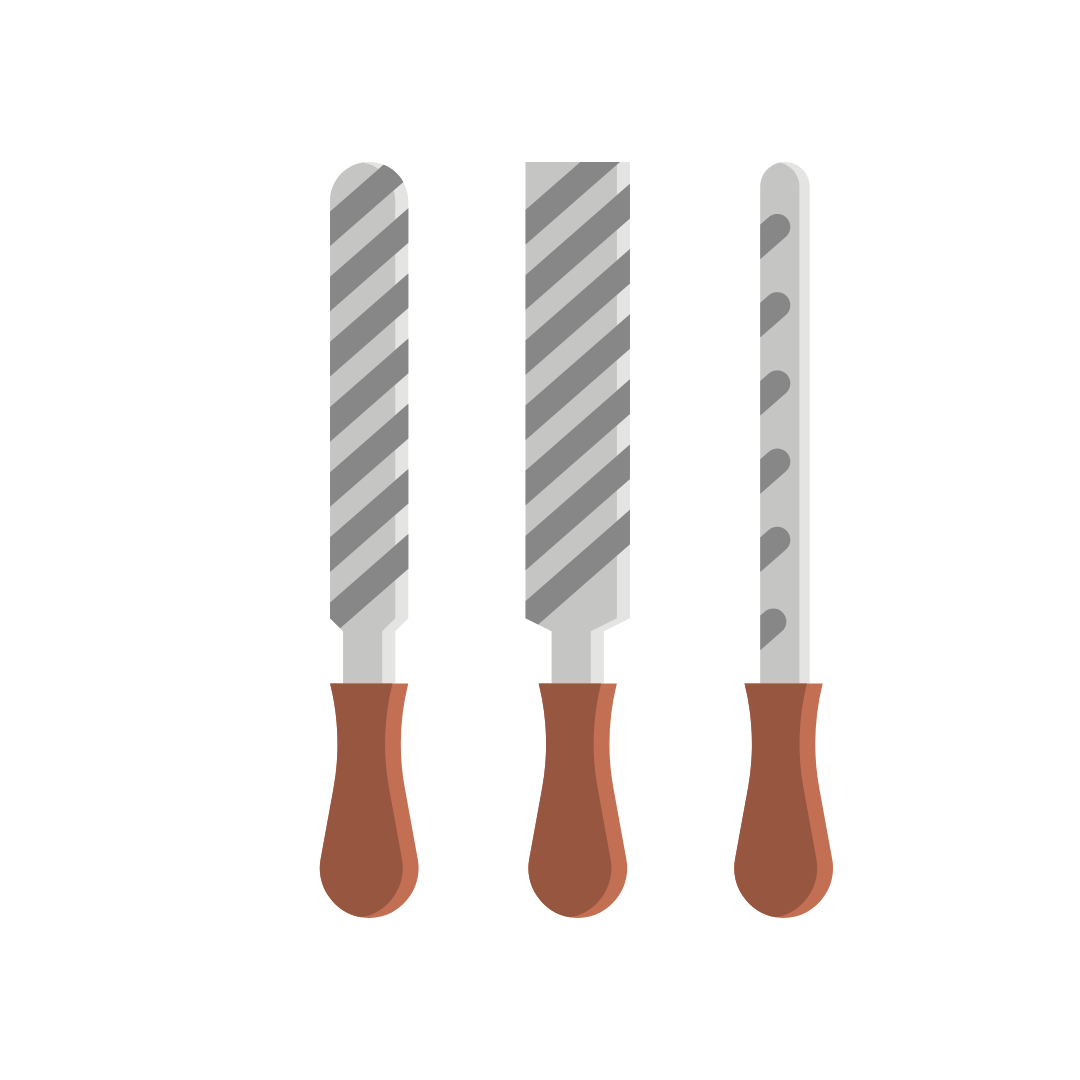
After taking the time to sharpen your knife, you shouldn't undo your hard work by making careless cuts that quickly dull blade edge again. To prevent this from happening, you should keep your knife away from any other metals. Neither should you toss your knife in the sink nor leave it loose in a drawer full of other cutlery. Never, ever, ever put your knife in the dishwasher; doing so will guarantee the knife's destruction. Keep your knife in a plastic sheath and clean it by hand after each use.

